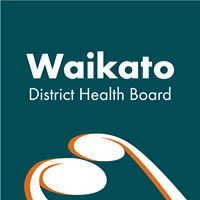Media Release
Date: 18 March 2008
X-Ray Film
Imagery To Be Obsolete
A $5.9 million investment in radiology and cardiology digital imaging systems at five Health Waikato hospitals will make viewing traditional x-rays outdated.
Waikato and Bay of Plenty district health boards yesterday formally agreed to use Philips Healthcare's Picture Archive and Communication System (Pacs) software.
In addition to the Pacs acquisition, the DHBs are to share a single radiology information system (RIS), provided by Philips Healthcare from an Australian vendor, Kestral Computing Ltd. The RIS is a recent development by Kestral (called KaRISma) and is a major development from Kestral's longstanding radiology management system.
A key feature of RIS and Pacs is the high degree of integration between the two systems ensuring all relevant information and images go to the doctor looking after the patient.
Under the Pacs' system, doctors and radiologists will view digital radiology images on desktop computers. Computer monitors with displayed images will replace hardcopy x-rays.
The advantage of this technology, due for installation by the end of September, is that doctors consulting on the care of the patient see images at the same time.
Prior to Pacs, doctors could only see hard film x-ray images if they were in the same room.
The upgrade links radiology departments and clinical staff across both district health boards at Tauranga and Whakatane hospitals, Opotiki Medical Centre and hospitals at Hamilton, Te Kuiti, Tokoroa, Thames and Taumarunui.
Bay of Plenty DHB is spending $4.6 million. The joint purchase makes it the largest Pacs installation in the country.
All radiology
and cardiology images are
* taken as digital images
* stored in a central archive
* available for
end-users to view at any time via their desktop PCS
Health Waikato chief operating officer Jan Adams said Pacs' clinical advantages were enormous.
"There are a number of benefits for clinical staff, GPs, private sector consultants, patients, hospital, and within the radiology department," she said. Radiographers would no longer have to work with chemicals to process films.
"This technology enables simultaneous access to images for patient treatment, colleague consultation, teaching, rural hospitals support and advice. It will provide clinical staff with immediate access to images and reports at clinics and wards.
"It will eliminate lost or misplaced radiographic films and eliminate multiple radiology film packets - one radiology image archive for all patients across both DHBs. It will eliminate the need to hold old film packet files in the radiology departments with all images being stored electronically," said Mrs Adams.
Facts:
Radiology
PACS-RIS
Bay of Plenty DHB and Waikato DHB are acquiring
and implementing a joint Radiology Pacs system. This means
radiology images and information will immediately and fully
available to clinicians across both these DHBs.
Cardiology
PACS-CIS
Waikato DHB is also implementing the cardiology
Pacs-Cardiology Information System (CIS) system provided by
GE Healthcare. The principal deployment will be at Waikato
Hospital and provision made for future demands from within
Waikato DHB hospitals, and other DHBs. Initially Bay of
Plenty DHB will be able to send some cardiology images to
Waikato DHB through the Radiology Pacs enabling earlier
consultation between the DHBs' cardiologists and the
associated benefits for the patients of both
DHBs.
.
Implementation of both Pacs-Radiology Information Systems (RIS) and Pacs-CIS involves Waikato Hospital and the rural hospitals at Taumarunui, Tokoroa, Thames and Te Kuiti. The implementation will occur at the same time as the Bay of Plenty sites.
Who will use
it?
Anyone who currently reviews a radiographic image or
reads a radiology report will use the Pacs-RIS system. The
main stakeholders are radiology, emergency department,
outpatient clinics, theatres and procedure rooms, wards,
intensive therapy, coronary care unit and newborn intensive
care units and at the mortuary.
The cardiology system
will be largely utilised within cardiology services.
What
stage is the project at?
The project has already been
through a process of consultation and selection of a vendor,
with contracts signed with the two vendors in late December
for the cardiology Pacs-CIS and signed on March 17 with
Philips Healthcare.
Implementation by end of September 2008.
What are the key features and
benefits?
Basically, it means that all radiology and
cardiology images are
* taken as digital images
*
stored in a central archive
* available for end-users
to view at any time via their desktop
PCs.
ends



 Tertiary Education Union: Weltec And Whitireia Cuts A Shocking Blow For Their Communities
Tertiary Education Union: Weltec And Whitireia Cuts A Shocking Blow For Their Communities PHARMAC: Pharmac Proposes To Fully Fund Nutrition Replacements For Some People With Crohn’s Disease
PHARMAC: Pharmac Proposes To Fully Fund Nutrition Replacements For Some People With Crohn’s Disease Nōku Te Ao: Bringing Together Voices On Mental Distress, Stigma And Discrimination Under One Roof
Nōku Te Ao: Bringing Together Voices On Mental Distress, Stigma And Discrimination Under One Roof Office of Early Childhood Education: Early Childhood Education Sector Confidence Survey Results 2025
Office of Early Childhood Education: Early Childhood Education Sector Confidence Survey Results 2025 Bikesport NZ: Intrepid Kiwi Teen Ready To Accept New Challenge
Bikesport NZ: Intrepid Kiwi Teen Ready To Accept New Challenge Wellington Access Radio: Young People Take Over Wellington Access Radio For Youth Broadcasting Week 2025
Wellington Access Radio: Young People Take Over Wellington Access Radio For Youth Broadcasting Week 2025